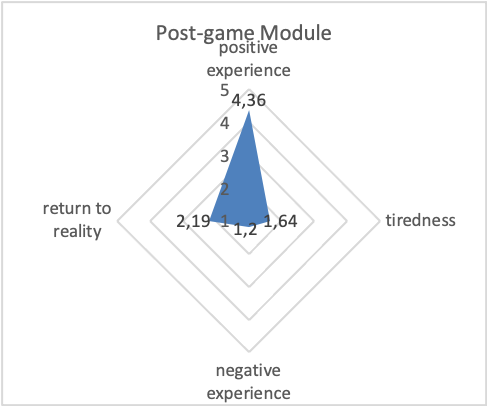Pipa vs Landa: Game-Based Learning Based on Gamification in Elementary School Mathematics Learning
DOI:
https://doi.org/10.21070/joincs.v8i1.1639Keywords:
gamification, game-based learning, game experiecne questionarie, mathematical learning, elementary schoolAbstract
Learning is an essential component of human existence. One of the learning opportunities in the educational context is available at school, where instruction is typically delivered orally and accompanied by visuals. Using activities to learn is an option that can increase student interest in certain subjects. Game-based learning is a form of education in which students play a game to aid in their education. This study attempts to employ the Pipa vs. Landa learning game's gift and combo system so that elementary school students are more motivated to learn mathematics. The average GEQ Core Module test results are 4,6 for positive affect, 3,9 for competence, 4,59 for sensory and imaginative immersion, 2,46 for flow, 1,25 for tension, 2,36 for challenge, and 1,39 for negative effect. The average scores on the GEQ Post-Game Module test were 4.36 for positive experience, 1.64 for fatigue, 1.2 for negative experience, and 2.20 for the return to reality. This game provides a superior experience for elementary school students.
References
[2] R. Indy, F. J. Waani, and N. Kandowangko, “PERAN PENDIDIKAN DALAM PROSES PERUBAHAN SOSIAL DI DESA TUMALUNTUNG KECAMATAN KAUDITAN KABUPATEN MINAHASA UTARA,” HOLISTIK, Journal of Social and Culture, vol. 12, no. 4, 2019.
[3] A. Yulianti and Ekohariadi, “PEMANFAATAN MEDIA PEMBELAJARAN BERBASIS GAME EDUKASI MENGGUNAKAN APLIKASI CONSTRUCT 2 PADA MATA PELAJARAN KOMPUTER DAN JARINGAN DASAR,” IT-Edu : Jurnal Information Technology and Education, vol. 5, no. 01, pp. 527–533, 2021.
[4] S. Wahyuning, “PEMBELAJARAN IPA INTERAKTIF DENGAN GAME BASED LEARNING,” Jurnal Sains Edukatika Indonesia (JSEI), vol. 4, no. 2, 2022.
[5] J. Lee and J. Hammer, “Gamification in Education: What, How, Why Bother?,” Academic Exchange Quarterly, vol. 15, pp. 1–5, Jan. 2011.
[6] V. Dzikriany Azis, H. Tolle, and A. D. Herlambang, “Perancangan User Experience dan Gamifikasi Pada Aplikasi Pembelajaran Online Jurusan Sistem Informasi Menggunakan Octalysis Framework,” Jurnal Pengembangan Teknologi Informasi dan Ilmu Komputer, vol. 4, no. 11, pp. 4132–4138, 2020, [Online]. Available: http://j-ptiik.ub.ac.id
[7] F. Rahman, S. Sumpeno, and A. Zaini, “Gamification wisata di Museum Mpu Tantular berbasis Augmented Reality,” Jurnal Teknik ITS, vol. 7, Mar. 2018, doi: 10.12962/j23373539.v7i1.29810.
[8] R. N. Sarbini, P. B. S., and O. Setyawati, “Pengembangan Game Content Model Untuk Game-Based Learning Pemahaman Berlalu-Lintas,” Jurnal EECCIS (Electrics, Electronics, Communications, Controls, Informatics, Systems), vol. 9, no. 1, p. pp.37-42, Jan. 2015, doi: 10.21776/jeeccis.v9i1.272.
[9] N. Rizky Akbar, E. Muhammad, A. Jonemaro, and T. Afirianto, “Evaluasi User Experience Pada Game Hearthstone Dengan Menggunakan Metode Game Experience Questionnaire,” 2018. [Online]. Available: http://j-ptiik.ub.ac.id
[10] M. A. Kusuma, D. Dwi Kusumajanto, R. Handayani, and I. Febrianto, “Alternatif Pembelajaran Aktif di Era Pandemi melalui Metode Pembelajaran Game Based Learning Article Info Abstrak,” Jurnal Kajian Teknologi Pendidikan, vol. 7, no. 1, pp. 28–37, 2022, doi: 10.17977/um039v7i12022p028.
[11] R. Ramadan and Y. Widyani, “Game development life cycle guidelines,” in 2013 International Conference on Advanced Computer Science and Information Systems (ICACSIS), 2013, pp. 95–100. doi: 10.1109/ICACSIS.2013.6761558.
[12] W. A. Ijsselsteijn, D. Kort, and Y. A. W. & Poels, “GAME EXPERIENCE QUESTIONNAIRE,” Technische Universiteit Eindhoven, 2013.

Downloads
Published
How to Cite
License
Copyright (c) 2025 Matahari Bhakti Nendya, Tiar Dwi Kristianto, Aditya Wikan Mahastama

This work is licensed under a Creative Commons Attribution 4.0 International License.





